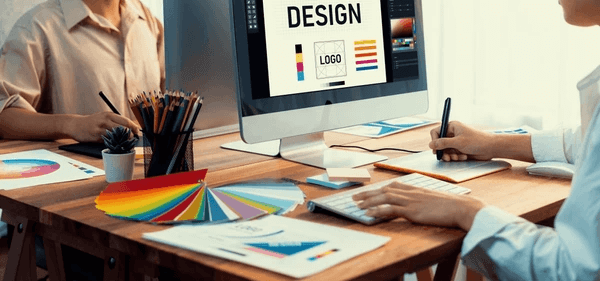Everything You Need to Know Before Hiring a Designer

Hiring the right designer starts with clarity. Before reaching out, define your project’s scope, style, and goals. Take time to explore portfolios, prioritize relevant experience, and ensure the designer aligns with your brand vision. Set a realistic budget and timeline, and establish clear expectations for communication, revisions, and deliverables. Don’t overlook the value of client testimonials or references—they speak volumes about reliability and results.
Why Hiring the Right Designer Matters
Design is more than just aesthetics. Good design communicates, builds trust, and leaves a lasting impression. A professional designer helps shape how your audience perceives your brand. Hiring the right designer ensures your project aligns with your vision and business objectives.
Step 1: Define Your Project and Style
Project Scope
Before you contact a designer, define exactly what you need:
- Are you looking for a new logo, rebranding, Book cover design, or promotional materials?
- What deliverables are expected? (Logo files, brand guidelines, web-ready graphics, etc.)
- What platforms will these designs be used on? (Print, digital, packaging, social media)
A clear scope helps potential designers understand your requirements and quote more accurately. To deepen your understanding of logo types, design principles, and the overall design process, check out our comprehensive Ultimate Guide to Logo Design.
Visual Style
Visual preferences vary, so share what you like:
- Provide examples or mood boards
- Clarify color schemes, typography, and design tone (modern, vintage, minimalist, bold)
Brand Identity
If this is a branding project, share your brand strategy, values, and audience demographics. A designer must understand your brand essence to design effectively.
Step 2: Review Portfolios and Past Experience
Analyze Portfolios
A designer’s portfolio is a window into their capabilities. Look for:
- Consistency in quality
- Variety in project types
- Work relevant to your industry or design needs
Avoid hiring solely on visual style—look for problem-solving, storytelling, and alignment with your goals.
Check for Industry Experience
If possible, choose someone with experience in your niche. For instance:
- For healthcare branding, a designer who has worked with medical clients will understand regulatory and visual nuances.
- For eCommerce, look for UI/UX strengths and website design experience.
Testimonials and References
Ask for:
- Client reviews/testimonials
- Case studies showcasing challenges and outcomes
- Contactable references (if possible)
Step 3: Discuss Budget and Timeline
Establish Your Budget
Before you negotiate, know your budget range. Designers charge in different ways:
- Hourly rate
- Flat project fee
- Retainers for ongoing work
Ask:
- What’s included in the cost?
- Are revisions covered? If so, how many?
- What deliverables are included (editable files, mockups, etc.)?
Define the Timeline
- Share your deadline upfront
- Understand the designer’s availability
- Break the project into stages (initial concept, feedback, final delivery)
Understand the Revision Process
- How many revisions are included?
- What’s the process for incorporating feedback?
- Are additional revisions chargeable?
Step 4: Clarify Communication and Workflow
Set Communication Preferences
Agree on communication tools and frequency:
- Email, Slack, Zoom, project management platforms (like Trello or Notion)
- Weekly updates or milestone check-ins
Provide Constructive Feedback
Design is collaborative. Clear, specific feedback improves results:
- Instead of “I don’t like it,” explain why
- Provide examples or references to guide revisions
Establish a Contract
A written agreement should include:
- Scope of work
- Timeline and deadlines
- Payment schedule
- Revisions and change request terms
- Copyright ownership
Step 5: Understand the Design Process
Typical Workflow
Each designer follows a unique process, but a general flow includes:
- Initial consultation/discovery
- Research and brainstorming
- Sketches or digital concepts
- Client feedback and revision rounds
- Final files and delivery
Ask:
- How involved will I be?
- What milestones should I expect?
- Will I get to choose from multiple concepts?
Adaptability and Problem Solving
Designers must adapt to changing directions or unexpected issues:
- Ask for examples of how they handled challenges
- Gauge their openness to pivot based on feedback
Step 6: Evaluate Technical and Soft Skills
Technical Competence
Ensure your designer knows the tools relevant to your project:
- Adobe Illustrator, Photoshop, InDesign, Figma, Canva, etc.
- Web or app-specific tools for UI/UX work (Sketch, Webflow, etc.)
File readiness is key—ask for deliverables in appropriate formats:
- Vector files (AI, SVG, EPS)
- Print-ready PDFs (especially important for stationery design)
- Web-optimized formats (JPG, PNG, etc.)
Soft Skills Matter
Look for someone who is:
- Communicative and transparent
- Organized and deadline-oriented
- Open to collaboration and critique
Trust and Compatibility
Compatibility ensures a smoother relationship. Hire someone who:
- Understands your goals
- Respects your input
- Shares your work ethic and pace
Frequently Asked Questions
What are the top 3 factors when hiring a designer?
- Relevant portfolio and design quality
- Clear communication and responsiveness
- Alignment with your brand and values
What skills should a professional designer have?
- Visual design and creative direction
- Mastery of design software
- Communication and problem-solving
- Time and project management
What questions should I ask a designer before hiring?
- Can I see work similar to my project?
- What is your design process like?
- What’s your turnaround time?
- How do you handle revisions and feedback?
How do I hire a logo designer or design agency?
- Define your brand needs and style
- Shortlist designers or agencies via platforms or referrals
- Review portfolios and client feedback
- Interview candidates
- Sign a contract and start the project
Final Thoughts: Build a Strong Foundation
Hiring a designer is more than outsourcing work—it’s a creative partnership. The right designer will bring your brand to life, create consistent visual assets, and elevate your professional presence. Whether you’re investing in logo design, video animation, or content writing, clarity and alignment are key. When expectations are clear and mutually understood, the results can be transformative.

